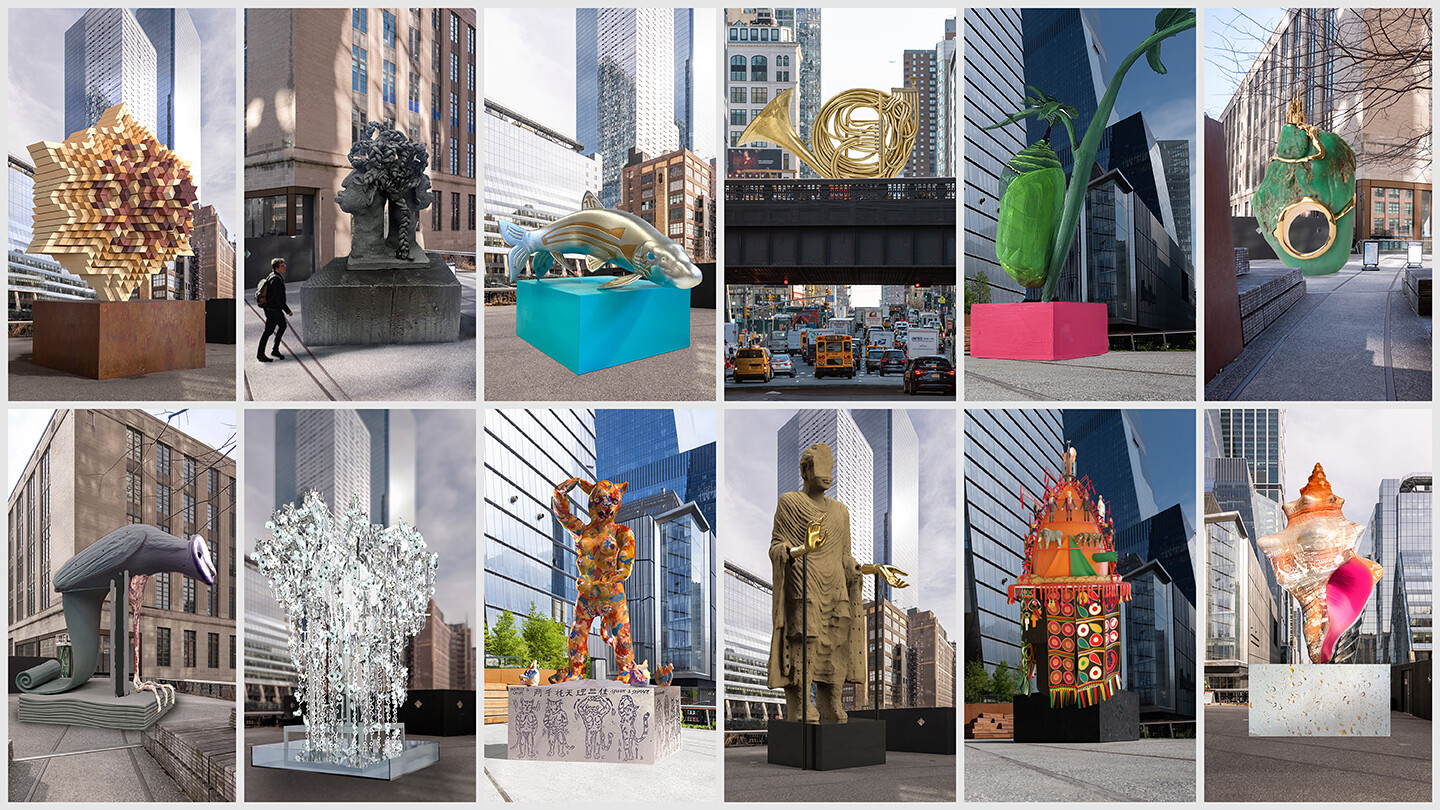March 19–June 30, 2024
The High Line announces the 12 shortlisted artists in consideration for the High Line Plinth, a landmark destination for public art. Their proposals will be presented as sculptural maquettes on the High Line for visitors to view and share feedback starting March 19. Two artists will be commissioned to create full-scale works that will be showcased for 18 months each, in 2026 and 2027 respectively.
Dana Awartani (b. 1987, Jeddah, Saudi Arabia) lives in Jeddah, Saudi Arabia.
An Ode to Our Ancestors is a 12-pointed stone sculpture inspired by sacred geometry, which is ever-present in nature—from living tissue cells to flowers and snowflakes.
Leilah Babirye (b. 1985, Kampala, Uganda) lives in New York.
Agali Awamu (Togetherness), is a 16-foot-tall cast bronze sculpture featuring two genderless faces connected through intricate braids, evoking “togetherness,” and looking out for one another.
Natalie Ball (b. 1980, Portland, Oregon) lives in Chiloquin, Oregon.
KISS THE C’WAAM represents the koptu and c’waam, sacred suckerfish that have existed for millions of years and are endemic to the Upper Klamath Basin on the Klamath Tribes territory in Oregon. The work carries the tribes’ kinship design to celebrate tribal sovereignty and the community who continue to love and protect the fish.
Sammy Baloji (b. 1978, Lubumbashi, Democratic Republic of Congo) lives in Lubumbashi, Democratic Republic of Congo, and Brussels, Belgium.
Listen Closely: You’ll Hear Their Feet Beating Out And Beating Out is an oversized horn that references the musical histories of the American South, where instruments came to symbolize community and solidarity, making music, rather than weapons, a tool for resistance.
Abraham Cruzvillegas (b. 1968, Mexico City, Mexico) lives in Mexico City, Mexico.
Untitled Pupa represents the chrysalis of a monarch butterfly and a milkweed branch — a metaphor for migration and travel not only of animals and plants, but also of human beings around the globe.
Rachel Feinstein (b. 1971, Defiance, Arizona) lives in New York, New York.
Castle on the Rock — a18-foot-tall sculpture made out of carved green jasper from Brazil —recalls romantic imagery from Renaissance paintings depicting a distant castle on a hill, a beacon surrounded by nature.
Camille Henrot (b. 1978, Paris, France) lives in New York, New York.
You Were Found is a larger-than-life bronze sculpture of a barn owl, a symbol of observation, intelligence, and magic. Henrot’s sculpture is a meditation on seeing and being seen, highlighting the idea that observation is an innately active posture.
Mire Lee (b. 1988, Seoul, South Korea) lives in Amsterdam, Netherlands.
The Leaking Machine resembles a metallic silver chandelier topped with “ribs” that hold water hoses that endlessly leak. Several “rain chains” are covered with small objects gathered from the surrounding community.
Candice Lin (b. 1977, Concord, Massachusetts) lives in Los Angeles, California.
Cat-Demon Protector is a 13-foot-tall, colorfully painted aluminum sculpture of a “cat-demon” in a traditional pose from qigong. Its head is mechanized to rotate 360 degrees at the top of every hour—resembling an Exorcist-like cuckoo clock.
Tuan Andrew Nguyen (b. 1976, Ho Chi Minh City, Vietnam) lives in Ho Chi Minh City, Vietnam.
The Light that Shines Through the Universe is a 30-foot-tall sandstone homage to the Bamiyan Buddhas, two 6th-century monumental statues in Afghanistan that were destroyed in 2001 by the Taliban. This broken, rebuilt, resilient figure suggests memory and reincarnation as a tool for renewal and healing.
Emeka Ogboh (b. 1977, Enugu, Nigeria) lives in Lagos, Nigeria, and Berlin, Germany.
Ijele 2.0 is a contemporary interpretation of the ijele, an intricately crafted mask featuring colorful depictions of humans, animals, and spiritual motifs and revered among the Igbo people in southeastern Nigeria.
Gala Porras-Kim (b. 1984, Bogotá, Colombia) lives in Los Angeles, California.
Future spaces replicate earlier spaces is a sculpture based on a Strombus conch which was often used throughout global antiquity as a musical instrument in rituals. The work will play music made from the sounds of an 18,000-year-old conch instrument.



